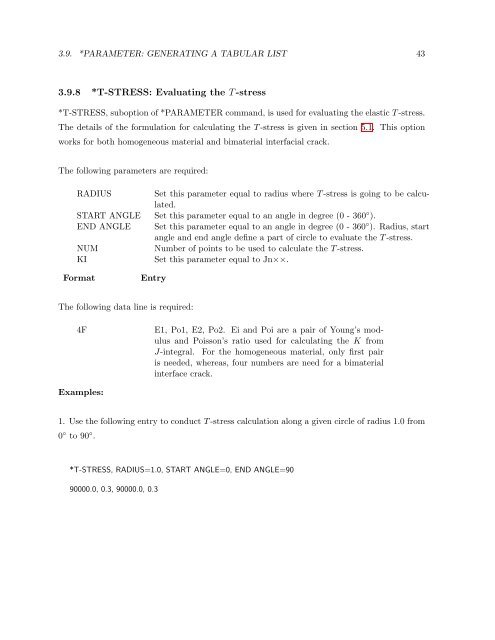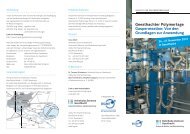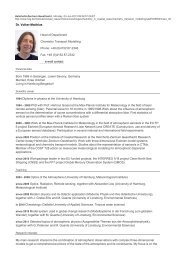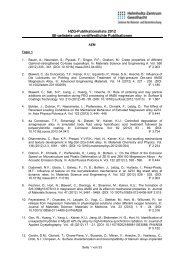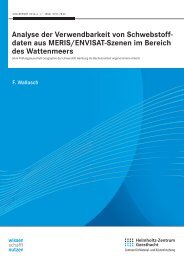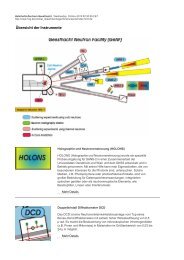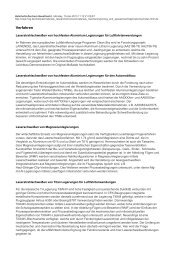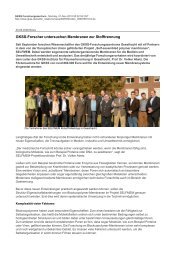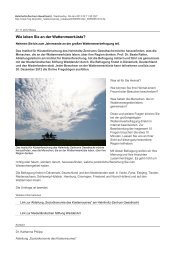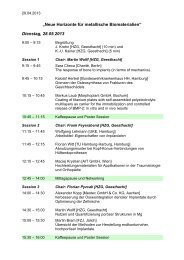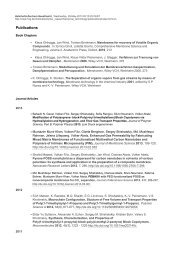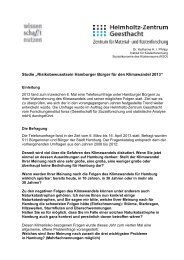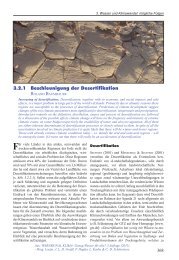A Finite Element Program (FECGS): Post-Processor FEPOST - GKSS
A Finite Element Program (FECGS): Post-Processor FEPOST - GKSS
A Finite Element Program (FECGS): Post-Processor FEPOST - GKSS
Create successful ePaper yourself
Turn your PDF publications into a flip-book with our unique Google optimized e-Paper software.
3.9. *PARAMETER: GENERATING A TABULAR LIST 43<br />
3.9.8 *T-STRESS: Evaluating the T -stress<br />
*T-STRESS, suboption of *PARAMETER command, is used for evaluating the elastic T -stress.<br />
The details of the formulation for calculating the T -stress is given in section 5.1. This option<br />
works for both homogeneous material and bimaterial interfacial crack.<br />
The following parameters are required:<br />
RADIUS Set this parameter equal to radius where T -stress is going to be calculated.<br />
START ANGLE Set this parameter equal to an angle in degree (0 - 360 ◦ ).<br />
END ANGLE Set this parameter equal to an angle in degree (0 - 360 ◦ ). Radius, start<br />
angle and end angle define a part of circle to evaluate the T -stress.<br />
NUM Number of points to be used to calculate the T -stress.<br />
KI Set this parameter equal to Jn××.<br />
Format Entry<br />
The following data line is required:<br />
4F E1, Po1, E2, Po2. Ei and Poi are a pair of Young’s modulus<br />
and Poisson’s ratio used for calculating the K from<br />
J-integral. For the homogeneous material, only first pair<br />
is needed, whereas, four numbers are need for a bimaterial<br />
interface crack.<br />
Examples:<br />
1. Use the following entry to conduct T -stress calculation along a given circle of radius 1.0 from<br />
0 ◦ to 90 ◦ .<br />
*T-STRESS, RADIUS=1.0, START ANGLE=0, END ANGLE=90<br />
90000.0, 0.3, 90000.0, 0.3


